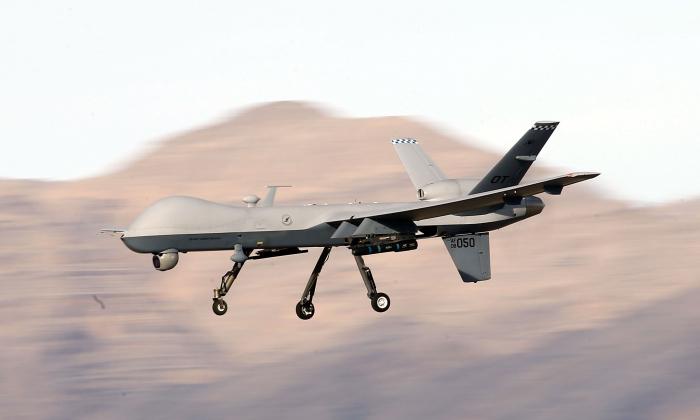In recent months, we have been seeing the disintegration of another formerly stable relationship in the Middle East: Saudi Arabia and Iran.
From 1979 when Iranian revolutionaries seized the U.S. Embassy in Teheran and held our diplomats captive for 444 days, the United States and Iran had been frozen in confrontation. This hostility was a given—comforting to Saudis, who became the principal U.S. ally in the Gulf. They provided reliable oil production, purchased staggering amounts of U.S. military equipment, and had the United States train their forces to U.S. standards.
This alliance was reinforced during the Desert Shield/Desert Storm Gulf War in 1991–1992. Saddam Hussein-Iraq’s assault on and seizure of Kuwait terrified Riyadh. There was very little that could have stopped Saddam had he chosen to drive his armored columns farther south into Saudi. U.S. forces were not positioned to be deployed fast enough (or in sufficient strength) to stop Saddam. As one Army officer commented, the 82nd Airborne would only have been a “speed bump” against Iraqi forces.
But Saddam didn’t drive south, and the United States had time to deploy its own armored forces from CONUS and Europe, construct a U.N.-endorsed coalition, and annihilate Saddam’s forces in Kuwait when the “Storm” broke in 1992.
The war had many consequences, but one was an intensified Saudi bond with the United States and their recognition that nothing could be permitted to disrupt this alliance.
Iran, however, was bitterly unhappy with its isolation. Dating to the Persian Empire, Iran views itself as the sophisticated powerhouse of the region (with the Saudis as desert nomads barely a generation away from living in tents with their camels). Tehran chaffed under strangling, U.S.-driven economic restrictions/sanctions and U.N. resolutions against its nuclear weapon program. Revolutionary fervor and belief they should lead the Islamic world as the head of Shia Islam, combined with fear of hostile power encirclement, drove them to accelerate a nuclear program in process since the days of the Shah.
The Saudis, however, were not worried—or at least not worried until recently. Apparently, they believed that the United States (and Israel) would abort the Iranian program either through clever clandestine technological sabotage or, if necessary, direct kinetic action. Iran, however, was impervious to sanctions, diplomacy, or sabotage; a nuclear weapon was clearly within Tehran’s near-term capabilities. And both the United States and Israel quailed at the potential consequences of military attack.
Instead, Washington after much anguish and fulmination offered Iran a complex agreement with U.N. endorsement to defer/delay Iranian nuclear weapon capability by 10–15 years. One can be skeptical Tehran will actually adhere to the agreement provisions; however, they benefit from the prospective end of U.N./EU/U.S. sanctions and access to approximately $100 billion in frozen funds. President Obama has channeled British PM Neville Chamberlain’s rationalization of “peace in our time” after agreeing with Adolph Hitler in 1938 to sacrifice Czechoslovakia’s independence—a pusillanimous decision that delayed World War II only by a year.
Needless to say, the Saudis have been highly disconcerted by these developments. Washington appears willing to sacrifice Saudi interests to prevent Israel from directly attacking the Iranian nuclear facilities. Changing Saudi leadership following the death of King Abdullah, a longtime stabilizing force and U.S. ally, has also unsettled Saudi domestic affairs and concurrently its foreign policy.
Saudi foreign policy now directly confronts Iran. It has sought to counter Iranian support for Syrian President Bashar al-Assad. It has announced a 34-nation Islamic/Sunni military alliance against terrorism, which appears to exist more on paper than in reality. It has intervened in Yemen, attempting to restore Sunni leadership over a Shia population, but has fallen into a quagmire there.
Moreover, driven by fears of internal al-Qaeda terrorists, Riyadh has resorted to draconian repression, executing 47 violent dissidents, including a prominent Shia imam on Jan. 2 (too late to be included in the 2015 State Department Human Rights Report). This was the classic example of “worse than a crime, a stupidity,” prompting massive global condemnation, but also sparking anti-Saudi riots in Tehran including burning the Saudi Embassy—reciprocal stupidity by Iran, sparking a number of Sunni states to break relations with Iran.
We are moving toward the paradigm of two scorpions in a bottle. Iran will, sooner or later, have nuclear weapons; however, Riyadh will not be nonnuclear. Virtually, unmentioned is a carefully concealed, hardened Saudi intermediate-range ballistic missile (IRBM) force supplied by Beijing. Moreover, clandestine judgment concludes that Pakistan, which funded its nuclear program with Saudi money, will supply nuclear weapons to Riyadh.
Prospects for Armageddon are in the offing.

David T. Jones is a retired U.S. State Department senior foreign service career officer who has published several hundred books, articles, columns, and reviews on U.S.–Canadian bilateral issues and general foreign policy. During a career that spanned over 30 years, he concentrated on politico-military issues, serving as adviser for two Army chiefs of staff. Among his books is “Alternative North Americas: What Canada and the United States Can Learn From Each Other.”





